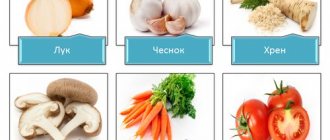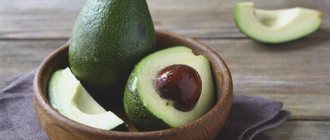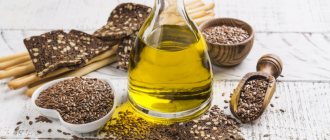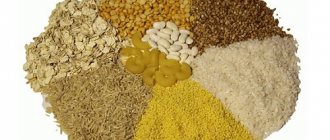Cabbage is a very popular food that is used in many recipes. This vegetable is rich in its vitamins and minerals. The beneficial properties of the product help cope with various diseases, including some types of stomach pathologies. However, many doctors disagree on whether it is possible to eat cabbage if you have a stomach ulcer. The article will help you figure out whether this vegetable can be eaten if you have stomach diseases, its beneficial properties, and in what form it is best to consume the product if you have pathologies.
Is it possible to eat cabbage if you have a stomach ulcer?
A stomach ulcer is a dangerous disease of the organ, characterized by the appearance of fresh wounds that do not heal for a long time on the gastric mucosa. The main cause of the pathology is excessive production of hydrochloric acid, which strengthens the wound surface. This problem requires immediate treatment, since, if delayed, peptic ulcer disease can cause complications in the form of cancer and bleeding into the abdominal cavity.
An important part of the treatment is the diet, which must be followed impeccably throughout the entire treatment process and after. The diet is based on warm dishes and bland foods that are easily digestible and digestible by the stomach.
The vegetable contains a lot of fiber, which when fresh is difficult to digest and can negatively affect the lining of the stomach. In addition, the product can increase the formation of acid in the stomach and provoke bleeding, so the use of the vegetable during the acute stage of the pathological process is strictly prohibited.
Benefits of cabbage
Cabbage is quite effective in the treatment of gastrointestinal disorders, since it contains a substance such as vitamin U, the main characteristics of which are assistance in tissue regeneration, elimination of bacteria and viruses, as well as assistance in the prevention of inflammatory agents and neoplasms.
Cabbage juice has a small amount of fiber, only in heat-treated form, so using the vegetable fresh is not recommended, especially in the stage of acute pathology. Therefore, the use of this vegetable is possible only at the stage of decompensation of the pathology.
What effects does it have on the body?
Cabbage in any form is very useful for humans - it is a storehouse of vitamins and minerals. The main property of cabbage is that it improves metabolism in the human body, improving vital functions. In a healthy person, the vegetable helps normalize digestion and prevents the occurrence of intestinal disorders.
However, consuming leaves of a fresh product in case of gastrointestinal pathologies can cause disturbances and poor digestion of food, as well as the appearance of undesirable symptoms: bloating, diarrhea, belching and heartburn.
White cabbage for ulcers
White cabbage is the most common and most affordable variety that many people buy for salads and soups. This variety is available and grown in all corners of the planet, has a low cost and has a large amount of vitamins and minerals. However, coarse fiber, which is also part of the vegetable, becomes the primary reason for limiting this product for various stomach diseases.
The use of this type of cabbage is prohibited during the acute stage of development of the pathological process in the gastrointestinal tract. You can eat it only in the remission stage, when the ulcers are covered with adhesions.
During the healing stage of ulcers, stewed or boiled cabbage can become an assistant and speed up the processes of wound regeneration and restoration of the gastric mucosa. Fresh cabbage increases the acid content in the stomach, so it should not be eaten if there are disorders in the gastrointestinal tract.
You can take the prepared dish either mixed with other products (in this case it will weaken its acidic effects), or in its pure form, but in small volumes. Suitable dishes made from white cabbage in remission are, for example, stews, casseroles, pancakes and cabbage soup in chicken broth.
The use of white cabbage in marinade is prohibited at any stage of the pathological process in the stomach!
Cauliflower
The only variety of cabbage allowed during the acute stage of the pathological process in the stomach is cauliflower. It has a very diverse vitamin composition that can heal some types of inflammatory processes. It is important to consider that cauliflower contains almost 2 times more nutrients than white cabbage.
This variety has the following beneficial properties:
- Cauliflower juice does not irritate the gastric mucosa because it does not contain heavy fiber;
- The vegetable has strong enzymes used to prevent complications of ulcers, such as the transition to oncological processes.
- The protective properties of the product help shape the body’s immune response to pathogenic stimuli, which is of great importance in pathological processes and inflammation;
- Vegetable juice is taken in the acute stage on an empty stomach to help the body absorb food;
- Protein components help break down food, easily absorbed in the stomach;
- Cauliflower juice contains many vitamins and minerals that are responsible for the growth of new cells and improve immunity.
This variety can be consumed at any stage of the disease, in any form - stewed, boiled, fresh. Cauliflower has more benefits for stomach ulcers than other varieties.
Broccoli for gastrointestinal ulcers
Broccoli is a subspecies of the cauliflower variety. It contains substances such as vitamin B, C, and a large amount of vitamin E. The vegetable also contains sodium, which is necessary for organs to maintain water and electrolyte balance. Broccoli has a large amount of fiber in its rough form, so it is limited in acute gastric pathologies.
It is prohibited to use fresh broccoli for ulcers, since the properties of broccoli can harm the healing of wounds in the stomach. The fresh type of vegetable increases the acid content in the diseased organ, exacerbating the ulcer.
Eating boiled or steamed vegetables is possible, but large quantities can lead to indigestion and increased gas formation, which can negatively affect an already diseased organ.
Broccoli juice and florets can be taken to prevent stomach ulcers - this will fill the body with vitamins and minerals. Broccoli juice for stomach ulcers perfectly protects the organ mucosa from harmful factors.
Broccoli is a kind of antibacterial drug that can destroy bacteria that cause irritation and disease of the gastrointestinal tract.
Sea kale
Another variety that people love to eat. This vegetable has many beneficial effects for a healthy person - it is a storehouse of zinc and iodine. This product is rich in vitamins and minerals necessary for immunity.
However, during a gastrointestinal illness, it is possible to eat seaweed only during the period of subsidence of the ulcer. Consumption in the acute period is fraught with consequences such as increased production of gastric juice and acid, which causes inflammation. Seaweed increases in volume when it enters the stomach, thereby enhancing the functioning of the organ and straining it - all this can cause a decrease in the protective properties of the organ.
Therefore, the use of seaweed as food is possible only with a healthy stomach or in the stage of long-term remission.
Chinese cabbage
The question of whether it is possible to eat Chinese cabbage if you have a gastrointestinal ulcer is very controversial. Here, much depends on the stage of the pathological process and on the general condition of the patient’s body.
This variety has a very delicate taste, which makes it very common when preparing fresh salads. However, do not forget that Chinese cabbage has exactly the same properties as white cabbage, so its use is prohibited for any acute diseases of the gastrointestinal tract.
It is possible to add Chinese cabbage in small quantities only when boiled or stewed, and also as components of stews, soups, casseroles and other heat-treated dishes.
Shelf life
Cabbage drink can be stored for 1-2 days. There is no need to prepare the front.
During storage, the medicinal properties will disappear, and then cabbage juice for gastritis with high acidity will be useless when consumed.
There is another way to use cabbage juice for gastritis. To begin with, it is worth getting prepared.
For these purposes, the patient should take 30-45 grams daily. honey It is desirable that these be different varieties.
It needs to be diluted with half a glass of water, previously boiled and cooled to room temperature.
You need to take it 2 times a day. In the morning 2 hours before meals and in the evening 2 hours before dinner.
After three days of preparation, you can begin the main course of treatment. It consists of a special scheme for consuming cabbage juice.
You need to drink half a glass of juice on the first and second day in the morning, 30 minutes before breakfast. The second dose should be in the evening 30 minutes before dinner.
For the next 12 days you need to drink 1 glass in the morning 30 minutes before meals. If gastritis continues to bother you, you need to repeat the treatment regimen again, but after a break of 10 days.
Treatment will help improve the condition of the gastric mucosa, which will normalize the digestive process, reduce the intensity of pain and other unpleasant symptoms that gastritis entails.
It is also worth adding a diet to the chosen regimen for treating gastritis with cabbage juice.
This measure will not only remove the symptomatic complex, but also speed up the healing of inflamed areas of the stomach.
Cabbage itself and its juice have a healing effect, helping to normalize the process of gastric juice secretion.
It is important to consider that gastroenterologists do not prohibit the inclusion of cabbage in the diet of patients with gastritis, but if the vegetable is consumed incorrectly, the condition of the body can be aggravated.
Is it possible to eat sauerkraut if you have a stomach ulcer?
Sauerkraut is beneficial due to its large amount of vitamin U, which is a great preventative against the formation of ulcers. The lack of this vitamin contributes to the thinning of the walls of the mucous membrane of the stomach and an increased risk of the formation of lesions.
The use of sauerkraut is allowed only in a healthy state, when there are no erosions or adhesions on the walls of the stomach. Then the pickled vegetable will not only help restore the body’s properties, but also improve the motility of the stomach and intestines.
In the stage of subsiding of the pathology, sauerkraut juice is also useful, which, due to its properties, is more easily absorbed by the body, carries the rapid absorption of the vitamin into the bloodstream and enhances the effect of the patient’s immune system, eliminating bacteria and pathological agents.
The preventive properties of sauerkraut are irreplaceable in the body, so in a healthy state this vegetable must be eaten regularly.
How to “get” cabbage juice?
If you have a powerful juicer, then no problems arise - you can load the cabbage by simply chopping it into pieces of suitable size. But since there are no sterile vegetables, the head still needs to be prepared before squeezing the juice.
- First of all, wash the head of cabbage thoroughly.
- Then place it in warm water for a while.
- If you want to carry out a more thorough disinfection, add a little apple cider vinegar to the water. This will kill the infection if it is present on the leaves, and will also help to better wash away the pesticides that are inevitably present on any modern vegetables and fruits.
After these activities, the cabbage can be chopped and loaded into the processor.
Cabbage juice can be varied, which will make it not only more tasty, but also much more healthy. Here are some recipes for such mixtures:
- Half a head of cabbage
- One apple
- A quarter cup of boiled water at room temperature
Wash the cabbage and apple thoroughly. Peel the apple. Cut the cabbage and apple into small pieces so that they can be easily loaded into the juicer. Pass the mixture through a juicer. Immediately add water to the resulting juice and drink immediately.











